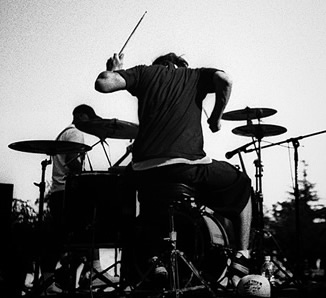Jamming is not easy because jamming is an art. Especially if you’re holding the drums. You have to keep the band in check and make sure that the whole thing is not a mess while you keep the groove. But you also have to channel the energy.
That’s the last part I want to talk about in this blog. Let’s say you’re beginning to jam on a chord progression. We’ll call it a vamp, because that’s what it’s called. So, you’ve got a soft bass line, a whispering rhythm on the guitar and subdued chords on the keys. The other guitar player decides to take the solo. It will be a slow one, with a steady progression from soft to all hell break lose. Take your time, breath through the nose.
The tension rises as the seconds pass. The band gets louder. Question: when do you, the drummer, decides to kick it into a higher gear? Ah! It’s a good question, thank you for asking. It is not an easy question, though. Because the drums are so essential to the energy of the band that if you go too soon, you run the risk of being the only one tearing his shirt off while the others are half asleep, and if you go too late, well, you miss the train, you miss the train. So, when? My answer, the one I go to 90% of the time is this: once everyone has gone louder, and I mean every one, that’s when I throw a big fill with deep toms and screaming cymbals, and I land on a busier louder groove. Before that, I keep the beat at about the same volume. I make sure I don’t go too soon, which is the common pitfall. I want to get a big effect. I also want to remind the band that I’m the one driving this thing. Miles Davis said it (he was talking about Tony Williams), the bands never sound better than when they’re centered around the drums. The drummer decides, well, almost everything in the department of raw emotion.
Now, there are many exceptions. And my ultimate advice is this: keep listening, the answer is in the music and your gut.

